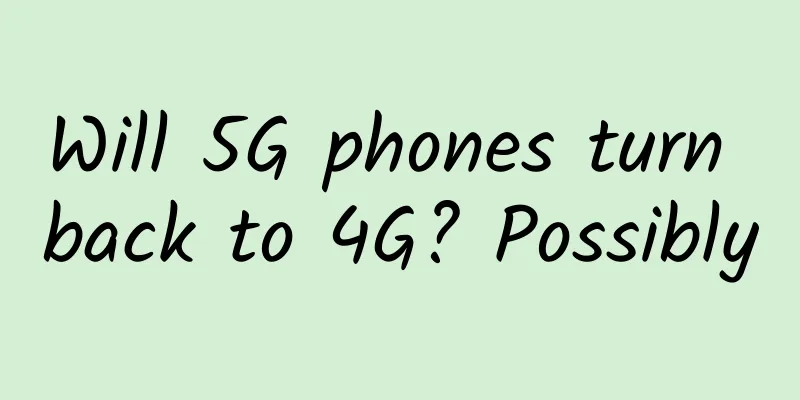How to promote 5G packages in small and medium-sized cities

|
From the perspective of package value, the current standard prices of 5G packages launched by the three major operators are all above 128/129 yuan. The superimposed upgrade or new preferential tariffs may be lower. Compared with the same-level 4G packages, 5G packages are slightly better in terms of traffic, voice and rights content. Therefore, regardless of whether the user has upgraded the 5G terminal or not, and whether the place of residence/work is covered by 5G signals, applying for a 5G package is a more cost-effective choice. Therefore, we can infer that a considerable number of current 5G package users are naturally upgraded from 4G high-value users.
From the distribution trend of 5G base station construction, large cities > small and medium-sized cities > rural areas. On the whole, large cities have high user demand and strong consumption capacity, and 5G signal coverage is good, while small and medium-sized cities and rural areas have poor coverage. Current 5G package users are also mainly from large cities, and the penetration rate in small and medium-sized cities and rural areas is low. However, with the further investment in the construction of 5G base stations, how should small and medium-sized cities promote 5G packages? Can they replicate the current promotion model of large cities? Small and medium-sized cities are rising, and the new generation of consumers has become a new engine of growthAs the urbanization process accelerates, the population and economic size of small and medium-sized cities cannot be underestimated. A research report on "China's Small and Medium-sized City Development Report (2019): The Road to High-Quality Development" released by the Small and Medium-sized City Development Research Institute shows that as of the end of 2018, there were 2,809 small and medium-sized cities (broadly speaking, including urban districts including townships) in mainland China, with a total population of 1.181 billion, accounting for 84.66% of the total population of the country; the total economic output reached 76.43 trillion yuan, accounting for 84.89% of the total economic output of the country. In addition, the McKinsey 2020 China Consumer Survey Report pointed out that from 2010 to 2018, the annual compound growth rate of households with annual disposable income of RMB 140,000 to 300,000 in third- and fourth-tier cities reached 38%, higher than the 23% in first- and second-tier cities. These wealthier households account for more than 34% of the population in third- and fourth-tier cities, close to the level of high-tier cities five years ago. The report also mentioned a new trend in small and medium-sized cities - the new generation of consumption in medium and low-tier cities has become a new engine of growth. This important consumer group is represented by young women, who are not worried about the cost of living or future savings and have a strong willingness to buy. They use Douyin and Xiaohongshu as their permanent residences, buy the latest generation of mobile phones, pull out skin care products or cosmetics recommended by beauty bloggers, and check in at travel celebrity check-in points. This is closely related to the rise of e-commerce platforms such as JD.com, Tmall, and Pinduoduo, because e-commerce platforms have helped brands to extend their sales channels to low-tier cities to a certain extent, driving wealthy young people in low-tier cities to increase consumer spending. According to the survey data in the report, "young shopping experts" in second-tier and lower cities only accounted for 25% of the respondents, but contributed nearly 60% to the growth of consumer expenditure. The data from these two reports have, to a certain extent, overturned our stereotype about low consumption power in small and medium-sized cities, and also injected a shot in the arm for operators to promote 5G packages in small and medium-sized cities. Large cities have strong differentiated strategies, while small and medium-sized cities focus more on network qualityAt present, in large cities with good 5G coverage, the consumption habits of different consumer groups vary greatly. Some are quite rational and pursue quality rather than social recognition; some pursue the highest cost-effectiveness; some are cautious in consumption and do not consume easily. Therefore, when promoting 5G packages, operators often create differentiated promotion strategies based on different user groups and different scenarios, striving to obtain the largest customer scale. Taking Guangzhou as an example, currently, operators mainly promote 5G smart home integration, package integrated 5G number cards, gigabit broadband, smart home networking, HDTV, smart access control/security/lighting and other products in high-end communities. They promote them to home users, mainly to build quality networks and build good reputation. For ordinary communities, urban villages and even mobile users, they increase or decrease package rates, content and product forms to meet user needs. China Unicom even launched the Wangka Smart Home Broadband for users who often travel, travel or move around, creating wireless mobile WiFi to expand the scale of broadband. Compared with big cities, customers in small and medium-sized cities are more "rich" and "have more free time." High housing prices and strong demand for housing have squeezed the disposable income of residents in big cities, while in small and medium-sized cities, due to lower housing prices and overall lower living costs, people have more money to spend. In addition, compared with large cities, the overall work competition pressure in small and medium-sized cities is less, users have relatively shorter overtime and commuting time, and longer time for entertainment and home life. Therefore, when faced with issues related to life happiness such as network quality, the perception is more obvious. Small and medium-sized cities need to pay more attention to refined operations to meet the needs of various groupsFrom a regional perspective, there are great differences in living habits, consumption capacity, and other aspects of residents in small and medium-sized cities between the east and west, and between the north and south. Therefore, compared with large cities, small and medium-sized cities are a more complex market. From the perspective of users, the characteristics of young people actively trying things out deserve more attention in the early stages of 5G packages and smart home promotion. According to various consumer reports, the sinking market in third-, fourth- and fifth-tier cities is an important market for smart products, among which urban youth show a higher willingness to pay for smart speakers, smart large screens, smart bracelets and sweeping robots. In addition, young users in small and medium-sized cities have stronger social attributes, so operators need to pay more attention to creating product innovation and social attributes in the process of 5G promotion among young people to gain a better user impression. In addition to the user group of "young shopping experts", small and medium-sized cities also include groups with consumption power such as migrant workers and the elderly. Among them, with the development of the "14th Five-Year Plan", migrant workers can settle permanently in cities and towns, and thus have more opportunities to achieve upward class mobility. The elderly are a more obvious trend at present - an aging population. This group has a large population size and is an important consumer market in the future. On the whole, young people are more willing to "try new things" and embrace new technologies, and new urban residents are more concerned about improving the experience of family scenes, such as children's education; while the elderly are more concerned about health, wellness and tourism. Therefore, in terms of 5G promotion, operators need to combine the needs of different regions, different groups and scenarios, and actively adjust the content and rights of product packages to achieve the purpose of best meeting user needs. In addition to public users, professional scene services also need 5GPeople in the communications industry often say that "4G changes life, and 5G changes society". With the further development of 5G, the development of operators in small and medium-sized cities is not only about acquiring new users, but also about professional scene services, such as e-commerce live broadcast, smart security, online education, smart medical care, smart cities/counties, etc. Among them, the new business model based on short videos and e-commerce APP live broadcasts has broken through the shackles of traditional offline sales, helping consumption and production to connect directly, and bringing new opportunities for the production and economic development of small and medium-sized cities. 5G provides better and more stable network support for live broadcasting, and the corresponding coordinated development of high-definition technology and Internet of Things technology can give consumers a smoother and more coherent experience. In terms of smart cities, operators have long set benchmarks. After China Mobile released its 5G+ plan in 2019, Zhejiang Mobile took the lead in establishing the country's first 5G industry alliance. The Wuzhen Town Government and China Mobile Jiaxing Branch signed a strategic cooperation agreement on the construction of a 5G demonstration town and jointly launched the "Wuzhen 5G Demonstration Town". The project focuses on 5G+ exhibitions, 5G+ tourism, and 5G+ urban governance, selects key scenarios, creates highlight 5G innovative application demonstrations, builds the "Wuzhen Super Brain", and explores the construction and operation model of smart towns. Ultimately, a smart future block that integrates management, travel, living, shopping, and entertainment can be realized. The 14th Five-Year Plan requires unswerving construction of a digital China and accelerated digital development. It also proposes the goals of promoting the construction of new smart cities in a hierarchical and classified manner, improving the urban information model platform and operation management service platform, building an urban data resource system, and promoting the construction of urban digital brains. Driven by both policies and technology, operators need to take the initiative to break away from the pipeline operation model of charging for network access and explore more business opportunities for professional scene services. For small and medium-sized cities, they can actively explore local characteristic needs, seize digital development opportunities, tackle the needs of government units/commercial customers, and provide high-value solutions/digital information services. |
<<: Seven distributed global ID generation strategies, which one do you prefer?
Recommend
The United States announced to the world that it would no longer force China's three major operators, but British companies rose to the challenge
On the last day of last month, the New York Stock...
Five best practices for improving network uptime
In the near future, no one should have to wait fo...
Do you know how much power 5G actually consumes?
5G is one of the hottest topics at the moment, an...
The fatal factor affecting TCP connection throughput: HOL
1. What is HOL HOL means Head of line blocking. I...
DesiVPS: $3/month-2GB/20G SSD/2.5TB/San Jose & Netherlands Data Center
DesiVPS is an Indian VPS hosting provider headqua...
VPSMS Mid-Autumn Festival Promotion: VPS monthly payment 38% off quarterly payment 32% off, Los Angeles CN2 GIA line monthly payment starts from 53 yuan
VPSMS is shared in the blog for the first time. I...
Tomorrow’s 5G performance depends on today’s mobile edge
We have been hearing the hype about 5G for quite ...
The next generation of wireless standards: What's different about Wi-Fi 6
Wi-Fi 6 is the next generation wireless standard ...
Top 10 SDN Solutions of 2018 (So Far)
Software is the front and center of the network w...
Friendhosting adds new VPS with large hard disk, 45% off for half a year, starting from 7.6 euros
Friendhosting sent an email titled "Storage ...
In 2020, my country's total base stations reached 9.31 million, and the interconnection bandwidth of the three major operators surged
[[411113]] According to the latest report "C...
How do weak-current system devices in different network segments communicate with each other?
As the number of employees or departments increas...
How to operate a big data center, these three indicators should be considered first!
Big data continues to impact large-scale enterpri...
Application of 5G IoT in Commercial Buildings
The long-awaited 5G technology is finally here. I...
It will take time for 5G to achieve a breakthrough from "1 to N"
[[402114]] Recently, the Ministry of Industry and...









